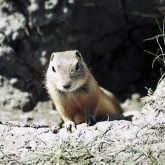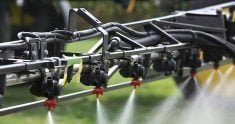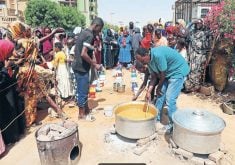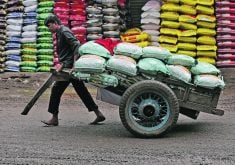The rapid onslaught of porcine epidemic diarrhea virus in the United States is partly blamed on a lack of information as the disease spread
DES MOINES, Iowa — The American livestock industry can’t afford to be caught flat-footed again when the next disease outbreak occurs, say U.S. government and hog industry leaders.
Porcine epidemic diarrhea virus revealed grave flaws in the U.S. response to non-catastrophic animal diseases.
“I want us to build a model together so that when the next PED comes into this country… that we act together and we act quickly,” Dr. John Clifford, head of the U.S. Department of Agriculture’s Animal and Plant Health Service, said at the World Pork Expo.
Read Also

Agritechnica Day 2: The future of tractor power, building quicker crop apps and large farms and tech
Agritechnica Day 2: The future of tractor power, building quicker crop apps with Syngenta and large farms and tech
“And we don’t wait to see if the disease is going to cause approximately seven million dead baby pigs. We take immediate action and we decide then, after we have good data and information, we make a better informed decision what the future needs to look like.”
Blame is circulating in the U.S. hog industry about how PED spread so widely and so fast and whether anyone should have stepped in to try to stop it. The disease was non-reportable when it appeared and is not classified as dangerous, as is foot-and-mouth disease.
U.S. authorities helped gather information about the disease but did not make it reportable for more than a year. Movement of pigs between barns was not banned.
Clifford said the USDA and the hog industry decided to approach the disease in a way that would rely on producer and industry co-operation rather than using strong control measures.
However, officials now know that two distinct strains of PED got into the United States along with delta coronavirus, and they might not have used such a restrained approach if that had been known.
Clifford said USDA officials are now trying to trace back to the source infection, but it’s difficult to do a year later.
“When you’re looking for pathways, you’ve got to have information and data in real time,” said Clifford.
“You can’t be going one to two months, or for this matter one year later, go back to the same premises that you think might be the index case and hope to be able to find and gather all the information and data that’s important to do that investigation.”
Clifford said it will be important in the next animal disease outbreak for veterinarians and authorities to have immediate information from all occurrences if there is to be any hope of eradication and effective control, Clifford said. Farmers need to be willing to trust the USDA and other authorities and provide that information immediately, he added.
“We’re not the EPA (Environmental Protection Agency),” said Clifford, to wry laughter from farmers and hog industry people at the World Pork Expo.
“I know confidentiality is a concern for you all. But I cannot do my job without good, solid data, and it has to be in real time.”
The EPA outraged farm groups this year when it released the names and locations of thousands of American farms. Farmers fear that activists could use the information to target farmers for harassment.
Dr. Howard Hill, chair of the National Pork Producers Council, said the confused response to dealing with the initial PED outbreak was due to the non-reportability of the disease and the way it was described by U.S. and global animal health authorities.
“How are you going to classify a disease like this that is not a foreign animal disease but it’s a new introduction,” said Hill.
“It was classified as a ‘transborder disease.’ ”
Hill, other leading veterinarians and Clifford all promised a faster and more aggressive response to the next animal disease outbreak, saying PED should be the lesson that trains the livestock business.
“There was a very poor response to PED. We didn’t have a plan in place,” said Hill.
“We need to look at this and figure out how we’re going to respond to a disease like this in the future.”















